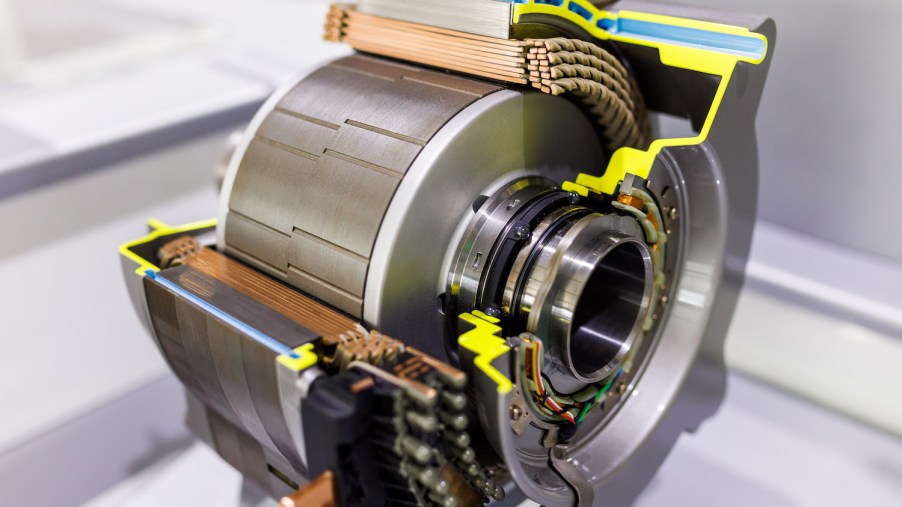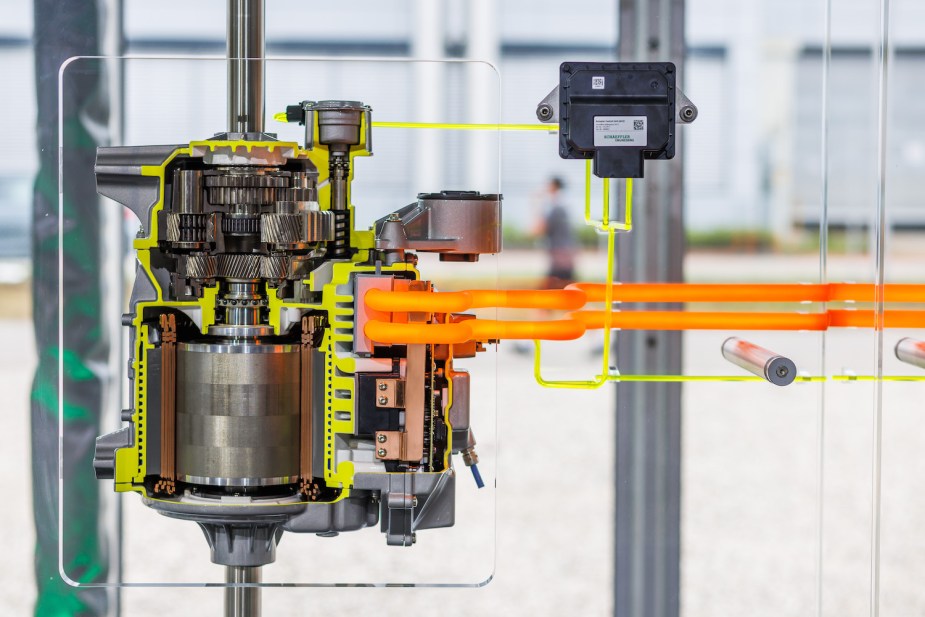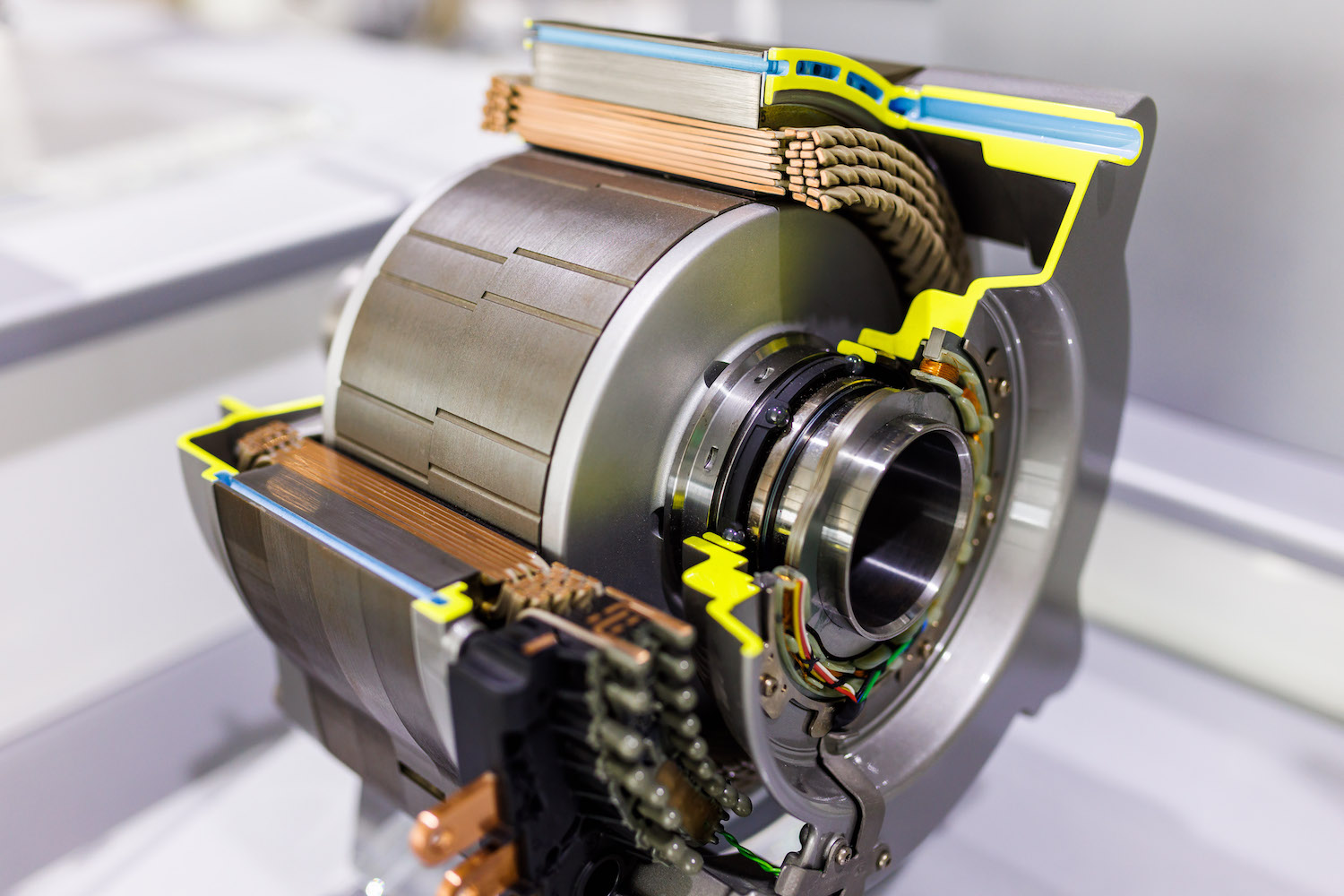
Do Electric Motors Actually Make More Torque?
The amount of torque an electric vehicle can make depends on that specific EV. Often, the factor that limits its torque is the amount of electricity it is engineered to safely pull from its traction batteries and feed into its motors. In addition, an EV can make maximum torque at zero RPM. This gives an EV very different driving characteristics from an ICE vehicle, simply because traditional engines need time to accelerate.
How do electric motors make so much torque right off the line?
Because electricity can move so quickly, an electric vehicle can put maximum power into its motors nearly instantly. What’s more, a slowly spinning electric motor can produce more torque than a quickly spinning electric motor.

Internal combustion engines take time to hit their ideal RPM for maximum horsepower and torque. Once they are spinning in their “power band,” they must use a transmission’s multiple gears to stay there–even as they continue to accelerate. Automakers have even begun to engineer motors that can hit maximum torque at lower RPM, and advertised them as such.
Many are surprised by how quickly an EV accelerates the first time they drive one. This is because an EV can increase the power to its motors just as fast as it can move electricity. That’s pretty fast. The limiting factor for an EV’s acceleration is how much traction its tires can maintain. This is why the internet is full of videos of stock Teslas beating built-up race cars at the drag strip.
One interesting characteristic of electric motors is what happens as they spin faster. A spinning electric motor actually creates an electric field and acts like an electric generator, forcing a “back electro-motion force” into the wires feeding it–according to Engineering Explained on Youtube. This disruption reduces the amount of torque the motor makes, the faster it spins. In many ways, this is the opposite of internal combustion engines.
Do electric motors actually make more torque?
Torque is essentially a measure of leverage, or force times distance. Electric motors are, by nature, very “torquey.” That said, the amount of torque an electric motor makes is dependent on the size of the motor and–as importantly–the amount of electricity the vehicle can feed into it.

In the past, electric vehicle manufacturers have set a torque benchmark–approximately equal to a competitive internal combustion vehicle. Then they designed their EV’s motors and power systems around that benchmark.
Today, an increasing number of EV supercars and supertrucks boast 220, 440, and even 880-volt electric systems. This enables them to rapidly draw electricity from their batteries and dump it into one or more electric motors. The resulting torque puts even the most powerful internal combustion vehicles to shame.
Do electric vehicles need that much torque?
The beauty of an electric vehicle, especially one with multiple motors, is it can adapt to its power needs in real-time. If one tire begins to spin, an electric vehicle capable of torque vectoring can channel extra power to its other wheels to get out of a low-traction situation.

Likewise, a modern electric truck can idle along with a relatively long range. But it can also provide 900 lb-ft of torque when trailering–at the cost of range.
This is a new paradigm in motor vehicles. Though engineers worked out many ways to decrease the fuel consumption of internal combustion vehicles when idling along (turbochargers, multi-cylinder deactivation systems, variable valve timing, etc.) having power on tap always cost power to maintain. Future electric vehicles, on the other hand, may truly be able to offer maximum power when you need it and maximum range when you don’t.
This is to say that an electric vehicle with multiple motors may claim 1,000 lb-ft of torque. But it rarely uses all of that torque. That number is simply the maximum power it could make if it had ideal traction and you were asking it to accelerate faster.



